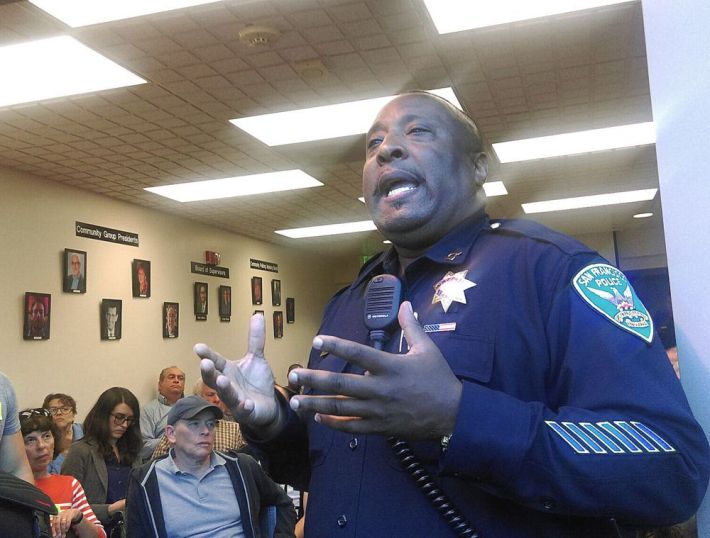
At a heated community meeting last month, a bike commuter asked SFPD Park Station Captain John Sanford whether he could expect to continue safely treating stop signs as yield signs. Sanford had instituted a crackdown on that behavior, and some ticket recipients said they were told they had to put their foot down at stop signs. Sanford confirmed to the crowd that that requirement does not exist, and insisted that his officers didn't enforce it.
Sanford then called over Traffic Company Sergeant Frank Harrell, who was in another conversation a few yards away, to consult as an expert on bicycle traffic laws.
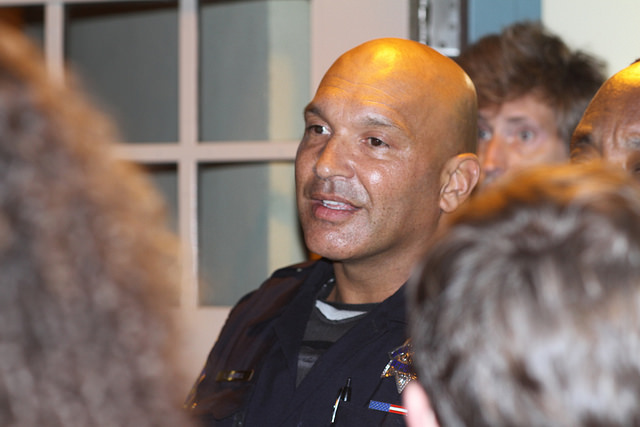
Harrell walked over and told the crowd, "The law says that the bicyclist must come to a complete stop and drop one foot."
In a roar, the group erupted, "No!"
"This is the problem," one man said to Harrell. "You guys don't have the rules right."
Ignorance and misinterpretation of traffic laws among SFPD officers -- even the supposed experts -- is a sign of the anti-bike bias that pervades the department.
Bike advocates and attorneys say officers routinely fail to accurately cite the laws they enforce against bicyclists, and even fabricate justifications.
"It comes up all the time," said Michael Stephenson, an attorney who estimates officers have wrongly cited a law in about a third of the bicycle crash cases he's investigated at Bay Area Bicycle Law (more than 1,000 of them).
Miles Cooper, a bike injury attorney who was there when Harrell falsely cited the stop sign law, said it's "a classic example of the huge institutional biases that have to be overcome in order for cyclists to be treated as equal on the roadway."
Cooper was one of dozens who recounted experiences with anti-bike bias at the SFPD at a City Hall hearing two years ago. Supervisors called the hearing after the death of Amelie Le Moullac, who was killed on her bike by a truck driver at Sixth and Folsom Streets, and was initially blamed by police who asserted that the onus is on bicyclists to pass to the left of right-turning vehicles.
The SFPD later found that the trucker was at fault for failing to yield when making a right turn, but only after video of the crash was found by a staffer at the SF Bicycle Coalition. Although the botched investigation sparked outrage and brought political attention to the issue of police bias, the trucker was never charged by the District Attorney's office.
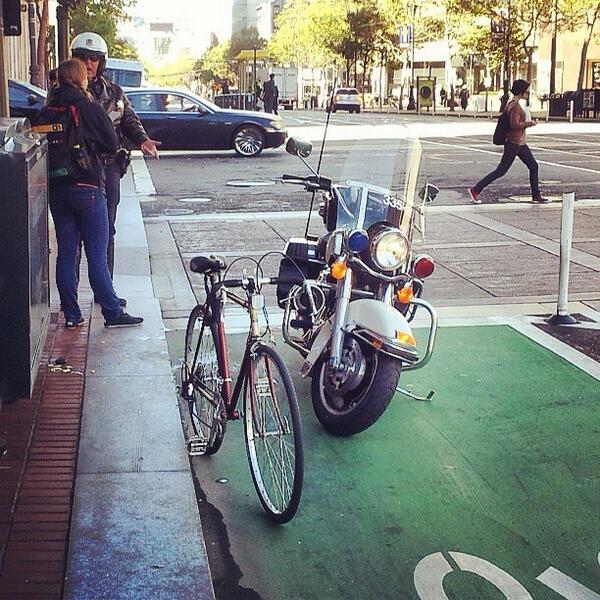
Leah Shahum, who was executive director of the SFBC at the time of the hearing, now heads the national Vision Zero Coalition. "It's not surprising that Vision Zero is raising questions and debate about long-held practices around traffic safety," said Shahum. "This is happening around the country."
SF is seeing "a realignment of thinking of policies and on-the-ground practices in really significant ways," she said. "It's not unusual that there will be individuals within those departments who perhaps don't fully understand the shift that is happening, and may resist and hold on to ideas from the past."
Nearly two years ago, the SFPD announced its "Focus on the Five" campaign to target enforcement of the most dangerous driving behaviors. But only recently has the department started to move toward compliance, and said in July that it also applies to bicyclists and pedestrians.
"What's really important is that the top leadership in the community stand by that commitment and acknowledge that this is change, and that it's going to be hard, but that it's critical," said Shahum. Officials like Mayor Ed Lee, SFPD Chief Greg Suhr, and Traffic Company Commander Ann Mannix "are really setting the tone and standard for everyone else."
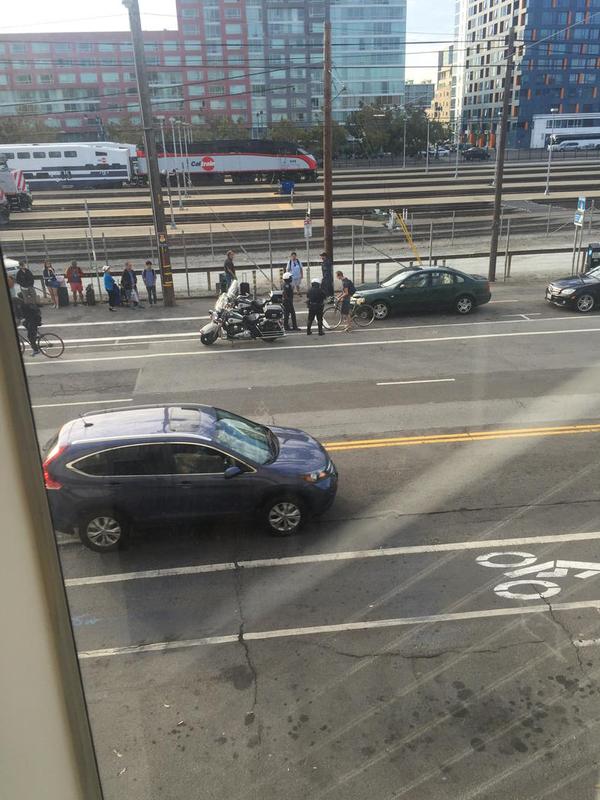
Mannix has said recently that the department aims to target dangerous driving because motor vehicles can generally kill and maim more easily than bicycles.
It sounded like progress from Mannix, who as captain of Northern Station three years ago, cited two laws incorrectly when Streetsblog interviewed her about a couple who was harassed by a driver while biking. The driver slammed the brakes in front of the couple, causing one of the bicyclists to crash into the car and suffer injuries.
Mannix said the injured man could have violated the law in the CA Vehicle Code against "following too closely," which applies only to motor vehicles. Contrary to CVC 21202, she also said the couple should have rode "to the extreme right" of a traffic lane, and not occupied it.
When I recently reached out for an interview with Mannix, SFPD spokesperson Albie Esparza responded. Esparza said SFPD officers must pass a test on traffic laws to pass the academy, and must "constantly receive training throughout the year" because "there are literally thousands of" laws that must be reinterpreted in accordance with recent court cases. Traffic Company officers receive specialized training in traffic laws, he said.
Nevertheless, the department's institutional bias toward blaming victims remains strong. Even in cases where drivers commit deadly violations like running a red light, police cite a variety of laws to blame the bicyclists they hit, according to attorneys we spoke with.
Bicyclists hit by red-running drivers have been blamed for violations like riding in a crosswalk or unsafely entering an intersection before it's clear. That latter law, Stephenson said, only applies to intersections without signals. Bicyclists are also often wrongly cited for passing on the left and right of stopped cars.
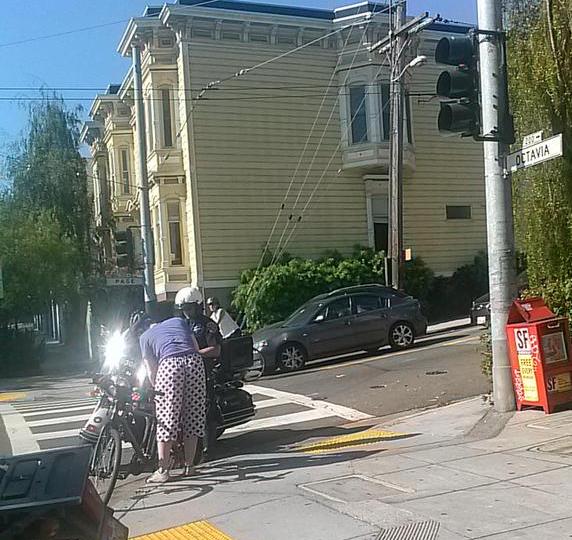
Stephenson said police also tend to blame bicyclists for "unsafe speed" violations, even when they're well under the speed limit, when they crash into a driver who violated their right-of-way.
That happened to Nathan Dushman last month at 18th and Minnesota Streets, where a driver who had a stop sign jumped in front of his path. There was no stop sign in Dushman's direction, but the police report included "nothing about whether I had the right-of-way," he said.
Attorneys said police often refuse to write police reports for bike crashes. Bike injury attorney Jeff Wozniak said he once had to go to Park Station to get police to write one for a client.
Attorney Shaana Rahman said misinterpretation of traffic laws doesn't seem to be "pervasive throughout the department," but that "I think there are certain divisions that have taken it upon themselves to reinterpret the laws." She speculated that there may be a lack of education among officers, especially about "grey areas" like the stop sign law, which even Captain Sanford doesn't follow strictly when biking.
"Grey areas aren't really taught through the police," said Rahman. "It's only through the conduits like the Bike Coalition and members of the Board of Supervisors hearing the complaints that the conversation has started trying to get everyone on the same page."
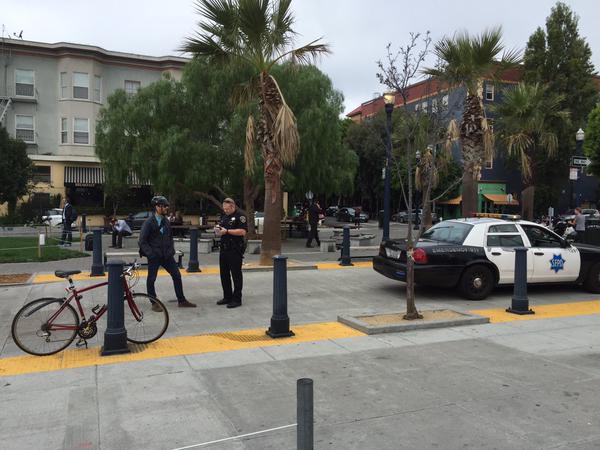
To reduce the "pro-car bias" at the SFPD, Wozniak said every cop should be required to ride a bike in the city regularly. Many SFPD officers may primarily experience San Francisco's streets from behind the windshield. Only 32 percent live in the city, according to an analysis of Census data by FiveThirtyEight.
At one point in the Park Station discussion about stop signs, Sergeant Harrell warned bicyclists to stay out of drivers' way by bringing up the case of Diana Sullivan. Sullivan was run over on her bike by a truck driver in front of a crowd at Third and King Streets in 2013, when witnesses said she was stopped at a red light. (This "has nothing to do with the stop sign" issue, Esparza acknowledged.)
Harrell claimed Sullivan "died in my arms," even though he got details about the case wrong. He called her "Kathleen," and asserted she was riding in a bike lane (where none exists).
Given Harrell's warning, I asked if Sullivan's death was her fault. "No," he said, "but you know what? It wasn't the truck's fault either," because they both "had equal responsibility of the road," and "both had the right-of-way." That is impossible, attorneys confirmed.
Noting how confusing traffic laws can be, Harrell said he "still doesn't understand" the new car restrictions on Market Street.
"I just ad-lib," he said.




